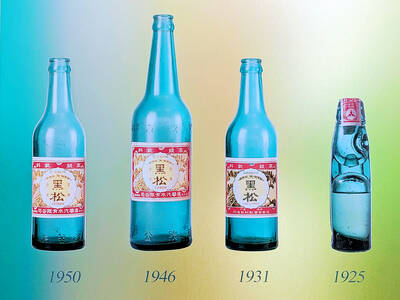January in Las Vegas. The sun, the shows, the casinos — and yes, the Adult Entertainment Expo, the world’s biggest porn convention. Every January pornographers from all over the world descend on Las Vegas to participate in seminars, learn about industry trends, network with peers, meet the new “creative” talent, and keep up with the latest technology. When I attended the expo, from sitting in the business seminars it quickly became clear that what excites these guys (and it was overwhelmingly men) is not sex, but money. They spend hours in airless, poorly lit conference rooms discussing niche markets, product diversification, and how to generate Web site traffic, because, as the expo Web site says: “Identifying, selling and marketing the right products for your existing customers and attracting new ones is vital in today’s competitive marketplace.”
As these predatory capitalists figure out ways to expand their customer base, a few meters away, in a cavernous convention hall, the very people they are analyzing are mingling with their favorite porn performers, watching snippets of the latest movies, and eagerly awaiting what the organizers call “Sexy Stage Shows,” where female porn performers simulate sex with each other. When I walked around the hall looking at the porn movies on display, I watched women being choked with penises till they gagged, being roughly penetrated by men who called them “slut,” “bitch,” and “cum dumpster,” and — in one particularly bizarre case — being penetrated while in a coffin.
Wandering around the room, I saw porn performers dressed in the usual garb of thongs, high-heeled shoes, and not much else, sitting on tables with their legs spread as men lined up to pose with them so their friends could take pictures. My interviews with the fans waiting in line revealed that they had bought the official party line: Porn was about fun and fantasy, not reality, and we shouldn’t take it too seriously. I wanted to drag these fans over to the conference rooms to show them just how wrong they were: to show them the venture capitalists, producers, directors, and distributors who took porn very seriously indeed.
And so they should. A multibillion-US dollar industry that produces more than 13,000 films a year in the US alone, the porn business is embedded in a complex value chain, linking not just film producers and distributors, but also bankers, software producers, credit card companies, Internet providers, cable companies, and hotel chains. Porn has been a major source of revenue for hotels for some time now, with chains such as Holiday Inn, Hilton, Sheraton, Radisson, Hyatt and Marriott making a lot of money from pay-per-view TV. In 2007, an article on the porn industry business site XBIZ put the annual revenues from hotel porn at over US$500 million. The article continued by pointing out that hotel porn not only makes money for the hotels, but also for the companies that supply it, which include mega-giants such as LodgeNet and On Command.
It is no accident that the International Consumer Electronics Show takes place in Las Vegas at the exact same time as the expo. Porn has helped drive the technologies that expand its own market. According to Jonathan Coopersmith, a historian of technology, porn has proven to be a reliable, highly profitable market segment that has accelerated the development of media technologies, from VCRs and DVDs to file-sharing networks, video on demand for cable, streamed video over the Internet for PCs, and, most recently, video for mobile phones. Video uses vast quantities of data, and the demand for porn has driven the development of core cross-platform technologies for data compression, search, transmission and micro-payments. File-sharing networks such as Kazaa, Gnutella and Limewire are better known for music, but are widely used for porn video files too.
Some of the themes that ran through many of the seminars at the expo were how to integrate porn into pop culture, create a favorable public image for the business, and sidestep regulation. The pornography industry, unlike most other industries, can’t directly advertise its products on television or in newspapers, so it has to rely on PR companies such as BSG Public Relations to place porn-friendly stories in the mainstream media. There are hundreds of examples to draw from here: Jenna Jameson on the Oprah Winfrey Show talking about how empowered she feels from making porn; Hugh Hefner being interviewed by yet another newspaper; an article in Cosmopolitan on how watching porn is a fun way for women to spice up their sex lives; or the popular T-shirts with “Porn Star” written across the chest.
The cumulative effect is what the journalist Pamela Paul calls the “pornification” of our culture, wherein porn images, messages and stories seep into our sexual identities and relationships. This trend can be seen in the ever-higher heels that are now popular with women, the hypersexed look of younger and younger girls, celebrities such as Miley Cyrus pole dancing, and — in what is probably the most blatant example to date — the popularity of genital waxing among young women.
This practice became widespread in porn about a decade ago and now is so commonplace that it is almost impossible to find female performers with pubic hair. Meanwhile, shaving has become so accepted among my female students that they tell me they are repulsed by their pubic hair. And so are their sex partners, some of whom refuse to have sex with them if they are not fully waxed. This makes perfect sense, given that many of these men got most of their sex education from porn.
This phobia has ironically given women one unexpected, if meager, weapon in their struggle to maintain a semblance of sexual autonomy: “The Trick.” I learned about it at a college lecture I gave a few years ago. A student in the audience started talking about “The Trick” as if everyone knew what it is. And, in fact, most of the other women nodded their understanding and familiarity with the practice. Well, it turns out that women who want to avoid sex on a particular night out purposely don’t shave or wax beforehand, so that they will feel too embarrassed to participate in casual sex. When I asked them why they couldn’t just say no to sex, they informed me that saying no was too difficult, given the pressure to have sex, so they pulled “The Trick” on the guy. Of course, “The Trick” really demonstrates just how little sexual autonomy and control the porn culture affords young women.
One of the seminars at this year’s expo is called In the Company of Women. Here academics will mix with pornographers to share ideas on how to develop niche products targeted to women. I’m sure there will be lots of talk about how women can be empowered by watching porn, because the pornographers, being the savvy businessmen they are, like nothing more than telling women that porn is actually good for them. This is their “trick,” and one we must resist if we want to replace the plasticized, formulaic and generic images of the pornographers with an authentic sexuality based on our own experiences, longings and desires.
Gail Dines is a professor of sociology and women’s studies at Wheelock College in Boston, Massachusetts.

Behind a car repair business on a nondescript Thai street are the cherished pets of a rising TikTok animal influencer: two lions and a 200-kilogram lion-tiger hybrid called “Big George.” Lion ownership is legal in Thailand, and Tharnuwarht Plengkemratch is an enthusiastic advocate, posting updates on his feline companions to nearly three million followers. “They’re playful and affectionate, just like dogs or cats,” he said from inside their cage complex at his home in the northern city of Chiang Mai. Thailand’s captive lion population has exploded in recent years, with nearly 500 registered in zoos, breeding farms, petting cafes and homes. Experts warn the

The unexpected collapse of the recall campaigns is being viewed through many lenses, most of them skewed and self-absorbed. The international media unsurprisingly focuses on what they perceive as the message that Taiwanese voters were sending in the failure of the mass recall, especially to China, the US and to friendly Western nations. This made some sense prior to early last month. One of the main arguments used by recall campaigners for recalling Chinese Nationalist Party (KMT) lawmakers was that they were too pro-China, and by extension not to be trusted with defending the nation. Also by extension, that argument could be

Aug. 4 to Aug. 10 When Coca-Cola finally pushed its way into Taiwan’s market in 1968, it allegedly vowed to wipe out its major domestic rival Hey Song within five years. But Hey Song, which began as a manual operation in a family cow shed in 1925, had proven its resilience, surviving numerous setbacks — including the loss of autonomy and nearly all its assets due to the Japanese colonial government’s wartime economic policy. By the 1960s, Hey Song had risen to the top of Taiwan’s beverage industry. This success was driven not only by president Chang Wen-chi’s

Last week, on the heels of the recall election that turned out so badly for Taiwan, came the news that US President Donald Trump had blocked the transit of President William Lai (賴清德) through the US on his way to Latin America. A few days later the international media reported that in June a scheduled visit by Minister of National Defense Wellington Koo (顧立雄) for high level meetings was canceled by the US after China’s President Xi Jinping (習近平) asked Trump to curb US engagement with Taiwan during a June phone call. The cancellation of Lai’s transit was a gaudy